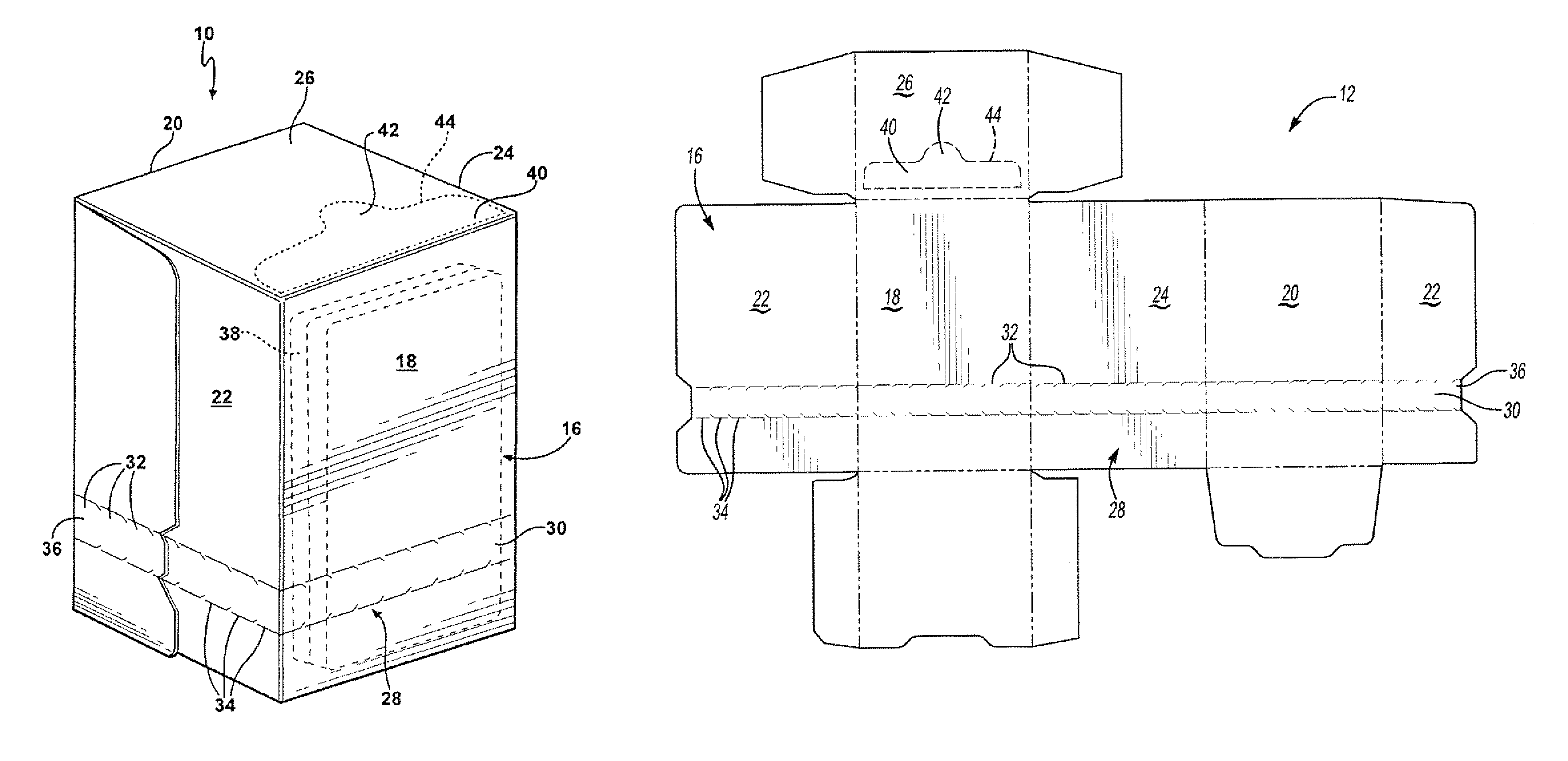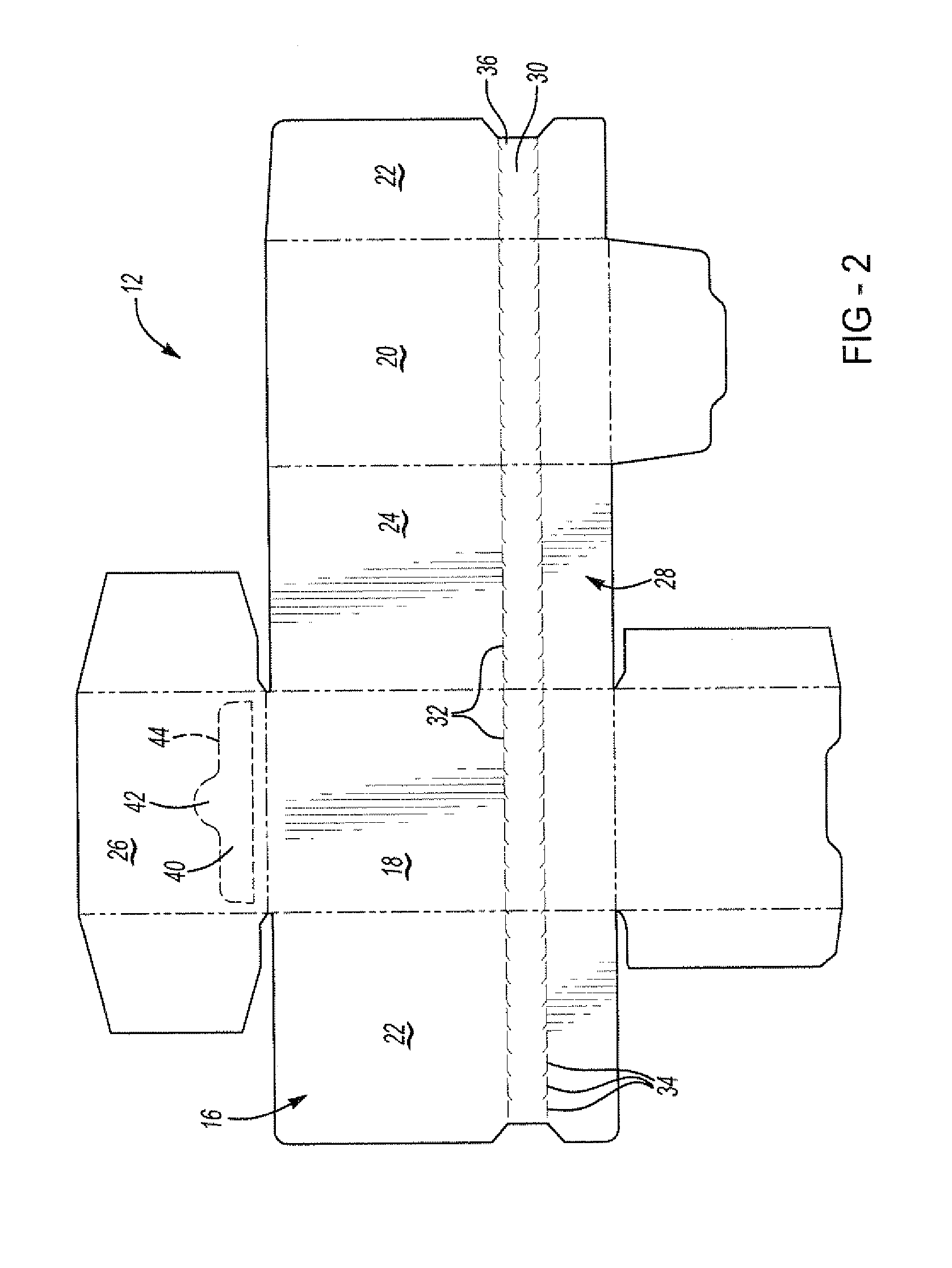Dual dispensing container
a container and dual technology, applied in the field of containers, can solve the problems of damage and deformation of corners, defined between the front, back and side panels, and achieve the effects of improving the configuration of perforations or slits, and improving the perforation of tear lines
- Summary
- Abstract
- Description
- Claims
- Application Information
AI Technical Summary
Benefits of technology
Problems solved by technology
Method used
Image
Examples
Embodiment Construction
[0020]Referring to the FIGS. 1 and 2, wherein like numerals indicate like or corresponding parts throughout the several views, a container is generally shown at 10. The container 10 is formed from a blank of material, such as for example corrugated material, plastic or paperboard, generally shown at 12 in FIG. 2. The blank 12 includes an inner surface (not shown) and an outer surface, generally indicated at 16 and adapted for receiving printed material. The blank 12 is divided into four parts, such as, for example, a front panel 18, a back panel 20, and side panels 22, 24, with one of the side panels 22 being formed from two halves connected to one another by glue or other mechanical means known to those skilled in the art. In the illustrated embodiment, the front panel 18, the back panel 20, and the side panels 22 and 24 have equal heights and widths but other heights and widths would be obvious to those of ordinary skill in the art.
[0021]The container 10 includes a tear line or te...
PUM
 Login to View More
Login to View More Abstract
Description
Claims
Application Information
 Login to View More
Login to View More - R&D
- Intellectual Property
- Life Sciences
- Materials
- Tech Scout
- Unparalleled Data Quality
- Higher Quality Content
- 60% Fewer Hallucinations
Browse by: Latest US Patents, China's latest patents, Technical Efficacy Thesaurus, Application Domain, Technology Topic, Popular Technical Reports.
© 2025 PatSnap. All rights reserved.Legal|Privacy policy|Modern Slavery Act Transparency Statement|Sitemap|About US| Contact US: help@patsnap.com



